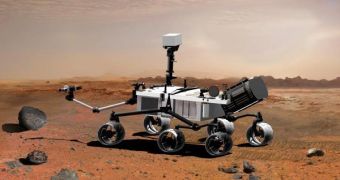Next year will see the first time a silicon chip is ever used in a space program. NASA's planned mission to Mars, scheduled for liftoff in the fall of 2009, is meant to relay back more detailed information about the soil of the planet, the atmospheric process currently present and the geological makeup of several areas around the designated landing site.
The Mars Science Laboratory (MSL) rover will have more equipment on board than any of the previous missions. Also, it will be the most sophisticated piece of technology ever to be sent into space. The highlighted features include the Rover Environment Monitoring Station (REMS), which, essentially, is a mobile laboratory meant to record and send back data regarding temperature and pressure, as well as wind readings.
Unlike other wind measuring devices, the REMS is equipped with silicon-based chips that can detect the presence and intensity of atmospheric movement using 30 temperature-sensitive platinum components, which form a sort of 3D field around the rover itself. This allows the machine to accurately register any wind that passes it by, generating a 3D model of the movements.
Each of the 6 wind sensors is made up of 5 platinum components, 4 of which are designed to measure the intensity of the wind, while the fifth offers a reference point by monitoring the outside temperature. The sensors themselves are distributed evenly across the rover, at an angle of precisely 120 degrees of each other.
Responsible for this invention is a team of Spanish researchers from several major companies and universities, including Instituto Nacional de Técnica Aeroespacial, the Consejo Superior de Investigaciones Científicas, EADS Astrium Cris (the company that developed the chip) and Centro Nacional de Microelectrónica in Barcelona. The team was led at first by professor Luis Vázquez from the Complutense University of Madrid. During the final stages of the development process, the research was conducted by aeronautic engineer Javier Gómez Elvira and EADS Astrium Cris.

 14 DAY TRIAL //
14 DAY TRIAL //